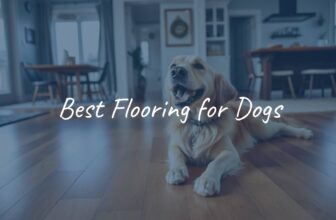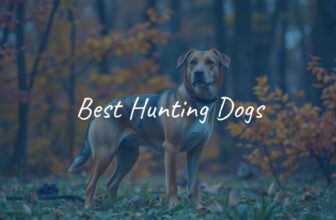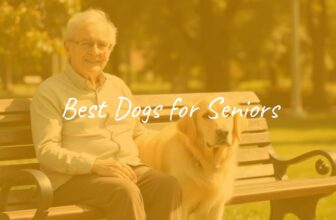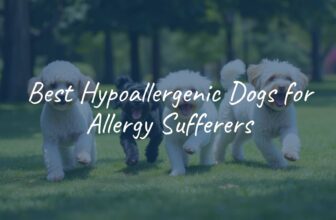The correct diet is critical to your dog’s long term health. Food quality can be judged according to the balance between protein, carbohydrates, fat and fiber.
What’s Most Important in Puppy Diet
Protein
Dogs require a higher proportion of protein than humans. Cheaper meals may contain too little or poor quality protein (poor quality protein has the wrong balance of amino acids and it is less digestible).
Unless your puppy has some kidney problems extra protein will cause no harm; it will be used as energy food or excreted. The best quality protein comes from eggs, then Fish meal, milk, beef, chicken, and lamb. Of the other common sources, Soya is better, then meat & bone meal/by-products, wheat, corn.
Carbohydrates
Unlike cats, dogs can digest a high proportion of carbohydrates (up to 70%) to meet their energy needs, although their wild ancestors would have got most of their energy from protein, with no more than 30% carbohydrates. Dry food needs starchy carbohydrates to form the biscuits or kibbles, but too much carbohydrate can make a canine overweight or sometimes cause digestion problems.
Fat
Any animal (or human) needs a certain amount of fat in the diet. Dogs require essential fatty acids present only in fat. For a puppy or lactating canine, there should be around 8-17% fat in the diet. For an adult animal around 5-15%. Too little fat can cause a dull coat and dry skin. Too much can cause an overweight.
Fiber
A certain amount of fiber in a dog’s diet is beneficial to his digestion, even though it does not produce any energy. It stabilizes the rate of digestion of food and will help in treating diarrhea, constipation, weight management and diabetes. Most commercial diets contain plenty of fiber for a healthy dog, but if your canine has some problems mentioned above, additional fiber may be beneficial.
Growing puppies, pregnant or nursing and very active (sled dog)s need more food for their weight than others. They need a good quality food, which is designed specifically for them.
Vegetarian Diet for a Pup
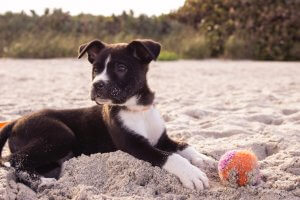
One glance at a canine’s teeth will show that it is a meat eater, not a plant eater. It is very difficult to create a balanced diet for a dog without meat, and if you could, would he/she eat it? If you feel strongly about this it might be a good idea to get a vegetarian pet such as a rabbit or bird instead.
Please beware of giving your puppy pieces of human food – meat scraps etc. These might be ok in small quantities as treats (they are too fatty to be 100% healthy for him), but many everyday foods including chocolate, grapes, avocado, mushrooms and macadamia nuts contain substances which are dangerous to dogs.
Many products out there contain too much of salt and/or sugar. These are two very good reasons why you should never feed your dog titbits during your meal.
Also, rhubarb leaves can be poisonous to your puppy so beware if you have some of them back in your backyard. It’s because they contain oxalates that cam make him/her sick if consumed in larger amounts.
Above being said, there are potential dangers with “high protein” food. We have to keep in mind that puppies are animals and their physiology was developed over time to thrive best in a natural environment. It is always important to provide you puppy with balanced diet – diet not only rich in protein, but also carbohydrates, fiber and fat. We have a dedicated section for food for puppies, which discusses all in a much greater detail.
Your Puppy’s Health
Puppies should be inoculated for the first time when they are about 8-12 weeks old. They should not be allowed to play with other dogs or taken outside for a walk until they have had their first and second vaccination.
Vaccination against Rabies, Canine Distemper, Hepatitis, Leptospirosis, Canine Parvo Virus and Kennel Cough may be required depending on your area. Vaccinations should be kept up to date and are essential if you put your dog into a boarding kennel.
Check your dog’s teeth regularly for tartar build-up, gum condition, objects stuck between his teeth, etc. Start doing this when they are puppies, so they get used to it and don’t object when they are older.
Some breeds are more prone to ear infections and if so you should clean your dog’s ears once a week to remove excess wax.
Protect your friend from fleas and ticks with a flea collar or a liquid product such as Frontline. Ticks are more difficult to kill than fleas and require that you renew the dog’s protection regularly.
Dogs need to be treated for worms occasionally. They may have worms and be able to infect others but show no obvious signs of being infected.
Keep an eye on your pet for signs of illness or injury. Check regularly for cuts, skin damage, injuries, etc. If in doubt take him to the vet. If your dog feels ill, he can’t tell you, but you will see changes in his behavior. With experience and common sense, you can usually tell whether your canine is ill or just upset or anxious about something.
As you play with or pet your dog you can check his condition – does he limp or get tired too quickly? Is he too fat or too thin? Is his coat in good condition? If in doubt take him to the vet.
Pet insurance will protect you from large vet bills that you can’t afford but do check exactly what the policy covers. Try to find out whether your dog have some chronic condition such as diabetes or arthritis, they will renew the cover the next year and continue to cover that illness. The sooner you find out the better. Many policies won’t cover existing illnesses so if your dog has developed a chronic illness you may be unable to switch insurers as the new insurer wouldn’t cover this illness.
Grooming
The techniques and equipment you need depend entirely on the type of coat your dog has. If he has smooth fur that does not get tangled or matted, all you need to do is brush him occasionally to remove loose hair, and even this is just for your benefit; the loose hair you remove is that much less for him to shed onto your floor.
Curly haired dogs such as poodles hardly shed at all but need a lot of grooming. It is essential to comb out tangles and knots at least once a week, get a full grooming every 4 to 6 weeks, and to have them trimmed.
Use a shampoo designed for dogs if you need to wash him. NEVER use shampoos, insect sprays, etc. containing citrus oil extracts – these are dangerous and can even cause death. The toxic chemicals can be absorbed through the skin and are even more dangerous if swallowed.
Equipment
Usually, you will want to have:
- Bowls for food and water – get the appropriate size for your animal. Automatic water bowls that refill automatically as the water is used are available.
- Collar and lead – make sure the collar is the right size. You should be able to put two fingers between the collar and his neck. A growing puppy will need a larger collar from time to time. For most canines, a standard buckle collar (leather or nylon) is fine. To train a dog to walk on a lead you may use a ‘halti’ type collar, a martingale collar, or possibly a choke chain. If you aren’t familiar with these, get advice from a dog trainer. A few breeds such as greyhounds have rather delicate necks that could be injured by a standard collar. If so you need to get a special collar.
- Tag attached to the collar with your address, phone number, etc.
- Bed – get the right size for your friend. He needs some room to stretch out and change position, but there is no point in a huge bed for a small dog. They prefer a bed that feels ‘cozy’ to them, that is not excessively large.
Other items you may need depending on the breed:
- Harness (very useful if your friend tends to break or slip from his collar)
- Coat. Many small breed and some larger ones such as greyhounds need a coat in wet or very cold weather. ‘Fashion’ coats, Halloween costumes, etc. are designed to please the owner, not the dog. Conventional coats are easier to put on, keep clean and are harder to wear out.
- Boots (if you have to take your friend out in freezing weather)
- Brushes, comb, shampoo, towels, etc. for the grooming. The type of coat determines what equipment you need.
- Clicker or whistle for a training
- Treats for rewards when training.
- Dog balls, other toys. Some canines will destroy all but the toughest toys; others love soft or squeaky toys. Indestructible hard rubber balls are excellent, but they don’t float! You can get hard rubber balls that fit into ball throwers designed for tennis balls; great for hyper-energetic dogs.
- Crate. If you get an adult-sized crate for your puppy, you should block off part of the crate with plywood or similar until the dog grows into it.
- Carrier. Only for breeds light enough to lift with one hand. With these, you can take small breeds on planes (check the airline’s requirements first)



